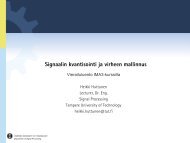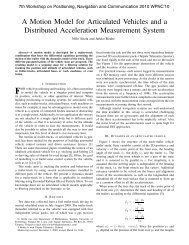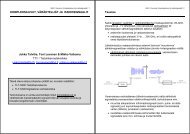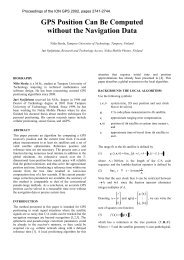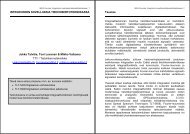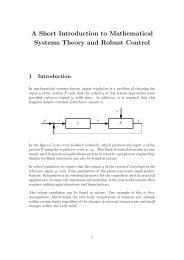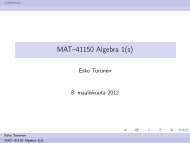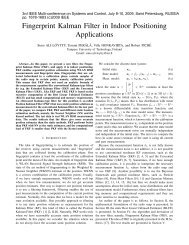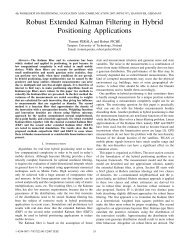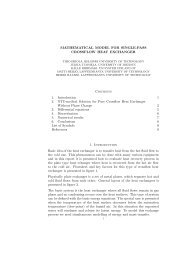Antti Lehtinen Doppler Positioning with GPS - Matematiikan laitos
Antti Lehtinen Doppler Positioning with GPS - Matematiikan laitos
Antti Lehtinen Doppler Positioning with GPS - Matematiikan laitos
You also want an ePaper? Increase the reach of your titles
YUMPU automatically turns print PDFs into web optimized ePapers that Google loves.
has seemed to consider the use of <strong>Doppler</strong> positioningin weak signal conditions.<br />
The great benefit of the <strong>Doppler</strong> positioning is that the <strong>Doppler</strong> measurements<br />
can be received even when the standard positioningfails. The <strong>Doppler</strong> measurements<br />
can be used to solve the receiver position even <strong>with</strong>out demodulatingthe<br />
navigation message. This requires that the satellite orbital parameters and the<br />
current time are known from some other source. Thus, this thesis belongs to the<br />
field of assisted <strong>GPS</strong>.<br />
The discussion of the <strong>GPS</strong> <strong>Doppler</strong> positioningis started <strong>with</strong> the physical background<br />
of the <strong>Doppler</strong> effect in Chapter 2. The chapter also enlightens the applications<br />
of the <strong>Doppler</strong> effect in satellite positioningand other fields. Chapter<br />
3 introduces the Global <strong>Positioning</strong>System, its standard positioningalgorithm<br />
and its limitations. Chapter 4 begins by discussing the feasibility of <strong>GPS</strong><br />
<strong>Doppler</strong> positioning. Later in the chapter, the new <strong>Doppler</strong> positioning algorithm<br />
is presented. Chapter 5 turns the attention to the important issue of positioning<br />
accuracy. Possible error sources are discussed. In addition, a theory for estimating<strong>Doppler</strong><br />
positioningaccuracy is developed. The possible applications of<br />
the theory are also covered. Chapter 6 begins <strong>with</strong> a numerical analysis of the<br />
properties of the measurement noise. Later, the new theory is compared <strong>with</strong> the<br />
numerical results. Furthermore, positioningresults <strong>with</strong> real measurement data<br />
are illustrated. Finally, Chapter 7 ends the thesis <strong>with</strong> conclusions.<br />
2



